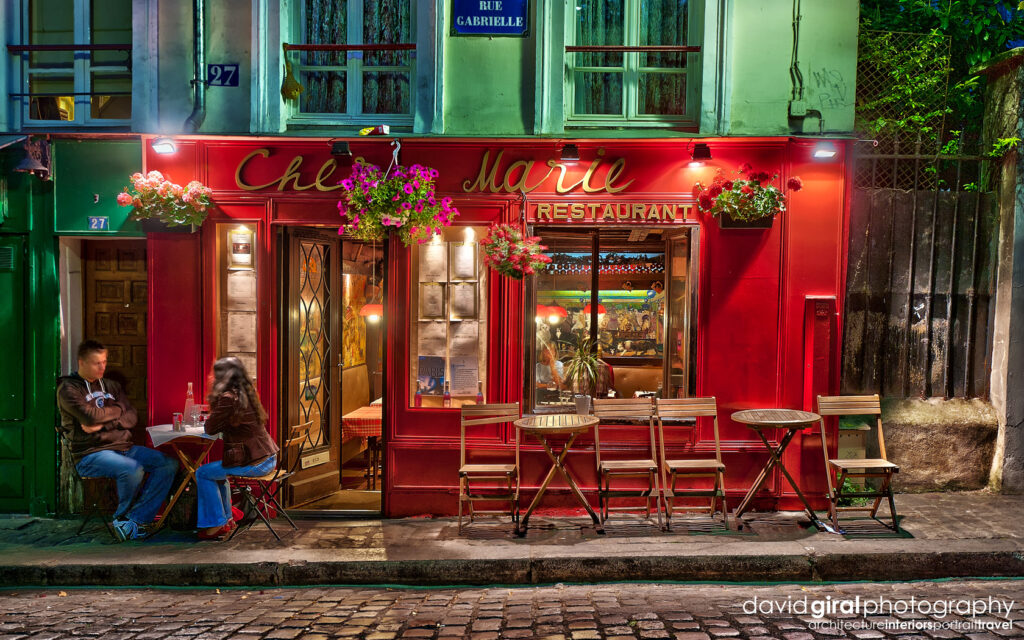The Significance and Allure of the Coffee House!
A coffee house, also commonly known as a café, is a type of establishment that primarily serves coffee, along with various other beverages, snacks, and sometimes light meals. Coffee houses have historically been important social and cultural spaces in many societies. They provide a place for people to gather, socialize, relax, work, and engage in discussions, often fostering a sense of community and intellectual exchange.

Importance of Coffee Houses.
Importance of Coffee Houses:
- Social Gathering: Coffee houses have long been centres of social interaction. People gather to meet friends, family, or colleagues, enjoying conversations and connections in a comfortable environment.
- Intellectual Exchange: Throughout history, coffee houses have played a significant role in facilitating intellectual discussions and debates. Writers, artists, philosophers, and thinkers often frequented coffee houses to engage in conversations that sparked creativity and the exchange of ideas.
- Cultural Hubs: Coffee houses can become cultural landmarks, reflecting the local customs and traditions of their communities. They often host events, open mic nights, live music performances, and other cultural activities.
- Workspace: In the modern era, coffee houses have become popular places for remote work or study. Many offer free Wi-Fi and a cozy atmosphere that appeals to people looking for an alternative to traditional offices or libraries.
- Relaxation: Coffee houses provide a relaxed environment for individuals to unwind, read a book, or simply enjoy a cup of coffee or tea in a comfortable setting.
Activities at Coffee Houses:
- Enjoying Beverages: Coffee houses offer a variety of coffee and tea options, along with other beverages like hot chocolate, cold drinks, and sometimes alcoholic drinks.
- Food: Many coffee houses serve light meals, sandwiches, pastries, and snacks that pair well with their beverages.
- Socializing: Coffee houses encourage conversations and interactions among patrons, creating a sense of community.
- Reading and Working: Many people use coffee houses as spaces to read, work on laptops, or study, taking advantage of the pleasant ambiance and amenities.
- Events and Performances: Some coffee houses host events like open mic nights, poetry readings, live music, and art exhibitions.
Location of Coffee Houses:
Coffee houses can be found in urban and suburban areas worldwide. They are commonly located in city centres, neighbourhoods, shopping districts, and near educational institutions. Coffee house chains can be found in numerous countries, providing a consistent experience across different locations. Additionally, there are independent and boutique coffee houses that offer unique atmospheres and specialty brews.
In summary, coffee houses are more than just places to get a cup of coffee; they are cultural hubs that foster social interaction, intellectual exchange, and relaxation. They offer a diverse range of beverages, snacks, and sometimes meals, while also serving as spaces for work, study, and various forms of entertainment.

History of Coffee Houses.
The history of coffee houses, or cafes, dates back several centuries and is intertwined with the evolution of cultural, social, and intellectual landscapes. Here’s an overview of their history and cultural significance:
Origins and Early History:
Coffee houses are believed to have originated in the Middle East, particularly in the city of Constantinople (modern-day Istanbul) in the 16th century. The first coffee houses were established as places where people could gather to enjoy coffee, engage in conversations, and partake in various forms of entertainment. Coffee itself had gained popularity as a beverage with stimulating properties.
Spread through Europe:
Coffee and coffee houses spread to Europe in the 17th century. The first coffee house in England is said to have opened in Oxford in 1650, followed by the establishment of coffee houses in London and other European cities. These early coffee houses quickly became hubs for intellectual discussions, political debates, and social interactions.
Intellectual and Cultural Exchange:
During the Enlightenment period, which spanned the 17th and 18th centuries, coffee houses played a pivotal role in fostering intellectual exchange and the dissemination of new ideas. Prominent thinkers, writers, and philosophers frequented coffee houses, using them as meeting places for discussions that influenced literature, science, and philosophy.
Cultural Significance:
Coffee houses gained significant cultural importance in various societies. In Ottoman culture, coffee houses became centres of socialization and entertainment. In Europe, they became venues for newspapers, pamphlets, and other printed materials, contributing to the spread of information.
Coffee Houses and Societal Changes:
Coffee houses have been associated with the emergence of new social dynamics. They provided a relatively egalitarian space where people from various social strata could gather, transcending traditional hierarchies. The notion of a “public sphere” began to take shape within coffee houses, where people engaged in discussions about politics, society, and culture.
Global Spread and Modern Era:
The concept of coffee houses continued to spread globally. In the Middle East, coffee houses remained integral to local cultures. In the 20th century, coffee houses took on new roles, serving as venues for artistic gatherings, countercultural movements, and creative expression.
Contemporary Relevance:
Today, coffee houses remain vital cultural and social institutions. They continue to provide spaces for relaxation, work, and socialization. The modern coffee house culture is often characterized by its diverse offerings, from traditional coffee and tea to specialty brews and unique culinary experiences. Coffee houses also embrace technology, offering free Wi-Fi and catering to the needs of remote workers and students.
In summary, coffee houses have a rich history spanning centuries and continents. From their origins in the Middle East to their spread throughout Europe and beyond, they have played essential roles in fostering intellectual exchange, shaping cultural dynamics, and providing spaces for social interaction. Their enduring significance continues to influence individual cultures and contribute to the diverse fabric of societies around the world.
Coffee House Changes over Time.
Coffee House Changes Over Time:
- Evolution of Purpose: Coffee houses have transitioned from being primarily places to enjoy coffee to multifunctional spaces. While they still serve coffee as a central offering, they have expanded their menus to include a wide variety of beverages, food items, and even alcoholic drinks.
- Technological Integration: The modern era has brought significant technological changes to coffee houses. Many cafes now offer free Wi-Fi, making them popular spots for remote work and digital interactions. Some cafes also have charging stations for electronic devices.
- Cultural Shifts: Coffee houses have adapted to changing cultural norms and societal dynamics. They have become more inclusive and diverse spaces, catering to various dietary preferences and offering options for vegan, gluten-free, and other specialized diets.
- Entertainment and Events: While coffee houses historically provided spaces for discussions and intellectual exchanges, modern cafes often host events, open mic nights, live music performances, and art exhibitions, enhancing their role as cultural hubs.
Services That Have Changed:
- Printing and Reading Materials: In the past, coffee houses often provided newspapers, pamphlets, and other reading materials for patrons. With the digital age, this service has largely shifted to online access through personal devices.
- Traditional Brewing Methods: While traditional brewing methods are still appreciated, cafes now often offer a wide range of brewing techniques, including espresso-based drinks, pour-over coffee, cold brew, and more.
- Food Variety: Coffee houses used to offer simpler snack options like pastries and sandwiches. Today, many cafes have expanded menus with a focus on quality and innovation, serving gourmet sandwiches, salads, artisanal pastries, and more.
Surprising Changes for Visitors Today:
- Specialty Drinks: Visitors might be surprised by the extensive variety of specialty coffee drinks available, incorporating unique flavor combinations, creative presentation, and alternative milk options.
- Culinary Offerings: The quality and diversity of food offerings in modern cafes might surprise visitors, with cafes often rivaling restaurants in terms of the complexity and artistry of their dishes.
- Third Wave Coffee Movement: The emphasis on sourcing high-quality, ethically traded beans and the attention to detail in the coffee-making process might be unexpected for visitors used to more traditional coffee preparations.
- Minimalism and Aesthetics: Many modern cafes focus on minimalist and aesthetically pleasing interior design, creating Instagram-worthy spaces that are visually striking and inviting.
- Digital Integration: The prevalence of Wi-Fi, charging stations, and digital ordering systems may surprise visitors who are accustomed to a more analog cafe experience.
In summary, coffee houses have undergone significant changes over time to accommodate evolving societal needs, preferences, and technological advancements. While they continue to serve coffee at their core, they now offer an array of beverages, foods, and experiences that cater to diverse modern lifestyles. The blend of tradition and innovation, along with their role as dynamic cultural spaces, might surprise visitors who are familiar with the coffee houses of the past.
Author.
Brendon McAliece is a multi lingual-expat who brings over three decades of flight simulator/PC building experience as well as over two decades of real world jet fighter experience as a weapons/egress technician. He holds a sport pilot certificate giving him real world flying experience. Hi travels have taken him from Europe to the Middle East, Asia and his home of Australia. He has a passion for travel, languages, Flight simulation as well as Guitaring and Coffee. You can read more in his blogs below.
Learn more @
DreamingGuitar.com – DreamingCoffee.com – LetsFlyVFR.com
Home – Blog – Shop – About
As an Amazon affiliate I may earn on qualifying sales.










5 responses to “The Significance and Allure of the Coffee House in History.”
[…] brew coffee offers a smooth and less acidic alternative to traditional iced coffee. To make cold brew, combine coarsely ground coffee and cold water in a pitcher or jar. […]
[…] story of Cortado Coffee finds its roots in the vibrant cafes of Spain, where coffee is not just a beverage, but an integral part of daily life and social interaction. The term ‘cortado’ itself […]
[…] creation of Vienna Coffee is said to have taken place during the 17th century, a time when coffee houses were emerging as centres of intellectual exchange and social interaction. The story goes that […]
[…] history of traditional Thai coffee is closely intertwined with the introduction of coffee to Thailand by way of trade and cultural exchange. The origins of coffee in Thailand can be traced […]
[…] recent compared to coffee. The widespread consumption of orange drinks became possible with the development of pasteurization and the industrialization of the food and beverage industry in the late 19th and early 20th […]